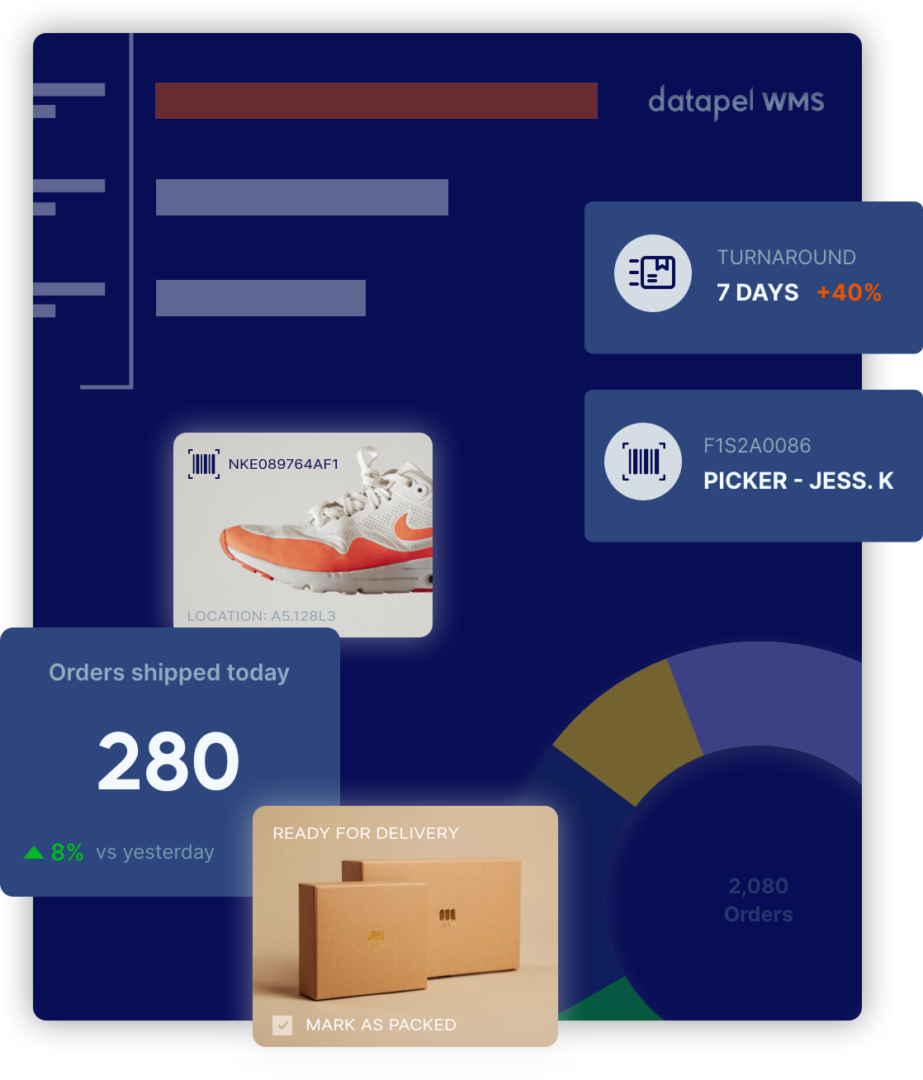10 Food and Beverage Trends to Shape 2025: Insights for Industry Leaders
Contents
The food and beverage industry is set for big changes in 2025. Consumer expectations are shifting, sustainability is a top priority, and technology is reshaping how businesses operate.
Feeling a bit overwhelmed? Don’t worry—you’ve got this! By staying ahead of these trends and using the right tools, you can position your business for success.
Let’s break down the top trends you need to know and how to tackle them head-on.
Food and Beverage Trends Shaping 2025
1. Elevated Home Dining Experiences
People are still skipping restaurants—but not on quality. Home dining is all about premium ingredients: artisan bread, aged meats, and gourmet condiments are flying off the shelves.
What does this mean for your business?
You’ll need smart inventory management to keep high-demand items in stock without over-ordering. Seasonal availability is key, and the right system can help you stay ahead.
2. Health-Conscious Choices Are Here to Stay

Even during indulgent times like Christmas, consumers are prioritising health. functional foods—think gut-friendly yoghurts or snacks packed with skin-boosting nutrients—are top of mind.
If you’re selling these items, clear labelling and efficient stock control are non-negotiable.
Consumers want wellness options, and businesses that deliver can stand out from the crowd.
3. Sustainability is a Consumer Mandate
Sustainability is no longer a “nice to have”—it’s a must. Shoppers are picking brands that offer eco-friendly packaging, reduced waste, and sustainable sourcing.
How can you keep up? Start by optimising your operations to minimise waste and make sustainable practices a core part of your process.
Tools like Datapel’s WMS can help reduce excess inventory and support your green goals.
4. Transparency in AI-Assisted Production
AI is everywhere in food production, but there’s a catch—consumers want transparency. Nearly 83% of people believe companies should disclose when AI plays a role in product design or manufacturing.
For businesses embracing AI, clear communication and labelling are key.
Paired with inventory tools, you can ensure products are accurately tracked and comply with labelling regulations.
5. Advanced Barcoding Enhances Transparency

2D barcodes are changing the game. Shoppers can scan these codes to instantly see allergen details, sustainability certifications, or ingredient origins.
Want to join the movement?
Using a WMS that integrates with advanced barcode systems ensures you stay ahead of consumer demands for transparency—and simplifies your stock management at the same time.
6. Tackling Food Waste with Better Planning
Nobody wants to see good food go to waste. Over-preparation and over-purchasing, especially during the festive season, contribute to significant food waste.
By using inventory forecasting tools, you can match supply with demand and reduce waste. Better planning means happier customers and a healthier planet—a win-win!
7. Local and Artisanal Products Gain Momentum
Consumers are drawn to food with a story. Locally sourced ingredients or products made using traditional methods are growing in popularity. If you’re managing a diverse product line, you’ll need flexible workflows to handle niche and artisan items. With the right WMS, you can efficiently manage these high-value, small-batch goods.
8. AI and Machine Learning in Supply Chain Management
AI isn’t just for designing food—it’s transforming supply chains too. With tools that forecast demand and streamline operations, businesses are becoming more agile and efficient. (Source)
Datapel’s WMS integrates seamlessly with AI-powered systems, helping you optimise inventory, reduce costs, and adapt quickly to market changes.
9. Culinary Inspiration Goes Digital

Forget cookbooks—platforms like TikTok and Instagram are driving food trends now.
Younger consumers are turning to social media for inspiration, and viral recipes can create sudden demand spikes. To keep up, businesses need responsive inventory systems that can handle unexpected surges. Staying connected to digital trends is a great way to stay relevant.
10. Stricter Regulatory Compliance
With technology like AI taking centre stage, regulatory oversight is ramping up. Consumers want clarity and government-backed standards to ensure safety and transparency.
Datapel’s WMS can simplify compliance by ensuring accurate tracking and reporting for batch numbers, expiry dates, and more. Stay ahead of regulations and build trust with your customers.
The Role of Technology in Navigating 2025 Trends

Adapting to the trends shaping 2025 doesn’t have to be overwhelming. With the right tools, you can turn challenges into opportunities and keep your business ahead of the curve. Datapel’s trusted Order and Warehouse Management System (WMS) is here to help. Whether it’s compliance, sustainability, or transparency, our system makes it easier to meet industry demands while running a smoother operation.
1. Compliance Management Made Simple
Let’s face it—keeping up with regulations can be a headache. As rules around AI usage and food labelling tighten, businesses need to stay on top of compliance. That’s where Datapel’s WMS comes in.
Our system offers full traceability, from batch and serial number tracking to expiry date management. You’ll know exactly where your stock has been and where it’s going, so you’re always prepared for audits or recalls. It’s peace of mind for your operations—and trust-building for your customers.
2. Reducing Food Waste with Inventory Accuracy
Sustainability isn’t just a buzzword—it’s a priority for businesses and consumers alike. The problem? Food waste is still a major issue. With Datapel’s WMS, you can tackle waste head-on.
Our system delivers 99% inventory accuracy, so you’ll always know what you’ve got in stock and when it’s time to rotate. Expiry date tracking helps you sell products before they spoil, and precise stock control means no over-ordering. It’s a win for your bottom line and the environment.
3. Enhanced Transparency with Advanced Barcodes
Consumers want to know more about their food than ever before—where it came from, how it was made, and whether it’s sustainable. Datapel’s WMS supports advanced barcode integration, making transparency effortless.
With 2D barcode technology, you can provide detailed product information at the scan of a code. Think allergen warnings, sustainability certifications, or even ingredient sourcing details. Not only does this build trust with your customers, but it also simplifies inventory management for your team.
In Closing
By putting these features to work, Datapel’s WMS helps food and beverage businesses rise to the occasion in 2025. It’s not just about keeping up—it’s about thriving. Lower costs, improved efficiency, and dramatically enhanced inventory control are all within your reach.
Ready to take your business to the next level? With Datapel, you’re already on your way.

In my role, I oversee the development of insightful blogs that delve into the intricacies of warehouse management. Each piece reflects my dedication to empowering businesses through informative content. Through my team’s extensive experience in the industry, we aim to bring clarity to the complexities of WMS, helping businesses make informed decisions.
Join me on a journey through the ever-evolving landscape of warehouse technology as we explore the latest trends, industry insights, and practical tips to streamline your operations. Feel free to connect, and let’s embark on a collaborative exploration of how WMS can redefine your business efficiency.
Cheers to innovation, efficiency, and the exciting world of warehouse management!







